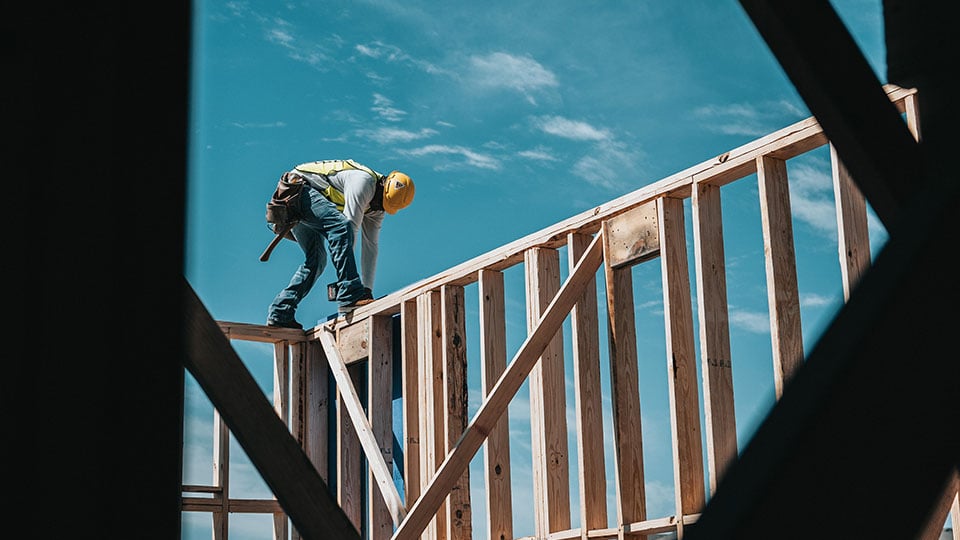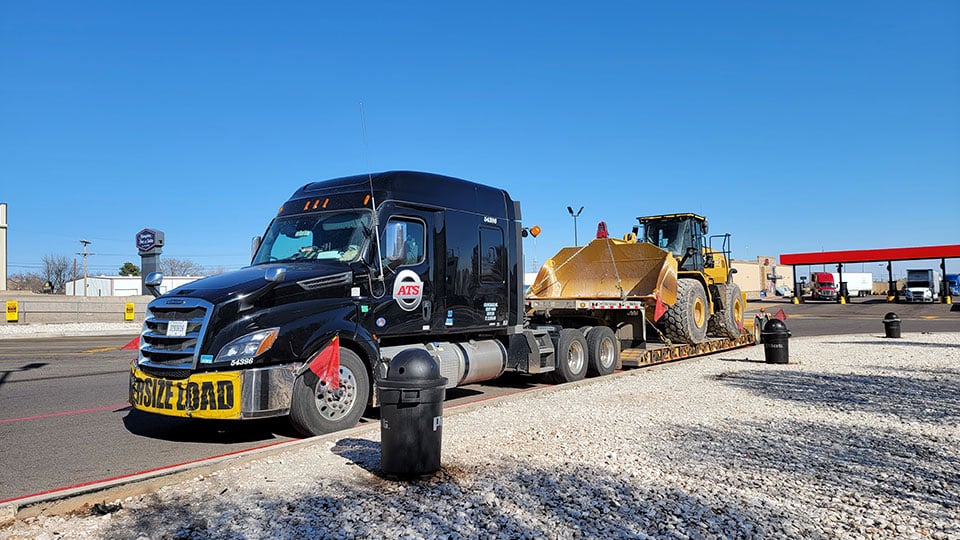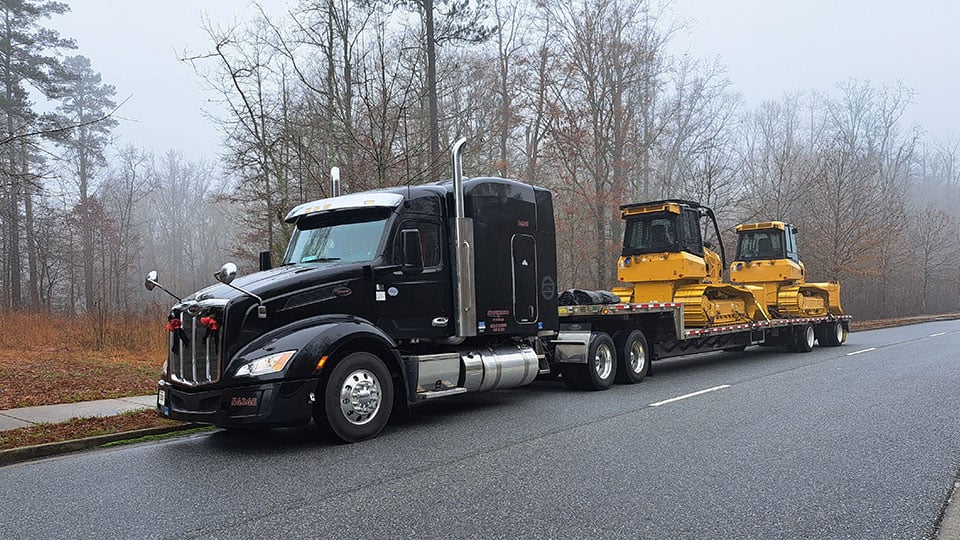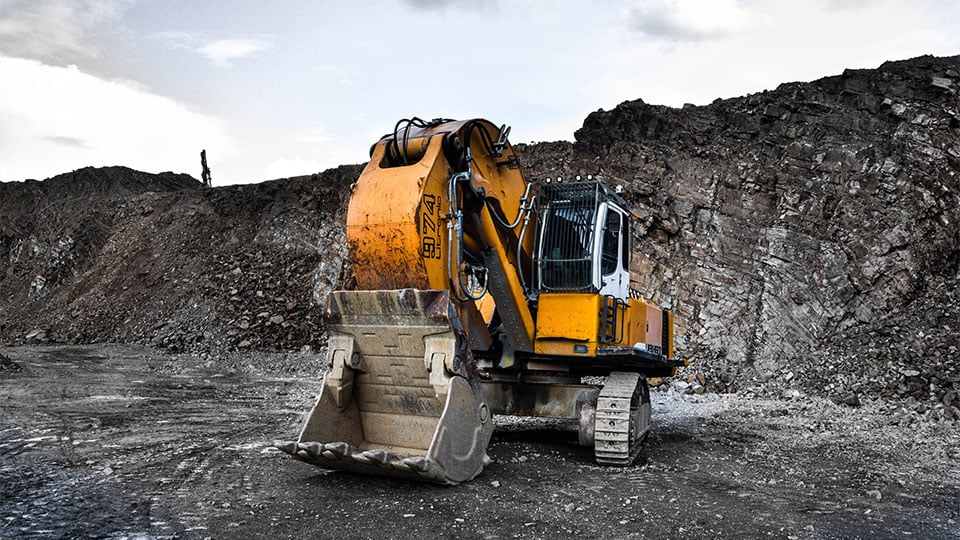It’s frustrating when your freight rates change — especially on short notice. Freight transportation isn’t your company’s only expense, but the more you pay these bills the more you realize how volatile they are. They might even be your most unpredictable expense each period.
This makes it difficult to budget for freight shipping, with any degree of certainty, into the future.
In turn, the forecasts (weekly, monthly, quarterly) you submit to your boss(es) sometimes look more like guesswork than concrete analysis.
It’s your job to understand the transportation industry’s cycles so you can reliably oversee your company’s supply chain logistics. But, once again, for a variety of reasons, this is easier said than done.
Construction season is one such variable, making a mark on U.S. transportation markets in a predictable pattern every year.
You need to understand the impact of construction’s seasonal presence on open-deck freight rates and capacity; things will change in your area and influence your business.
As one of our nation’s largest industries, when commercial, residential and infrastructure construction projects ramp up in the spring, most businesses feel this effect.
Minimize the impact rising rates and restricted capacity has on your supply chain by understanding what happens during construction season, when it starts and how to prepare.
After nearly 70 years in the transportation world, here at Anderson Trucking Service (ATS), we’re no stranger to the ebbs and flows of this industry — including what happens each year when construction projects commence.
In this article, you’ll learn what you need to know to navigate construction season this year and into the future, including:
- What Construction Season is
- When construction season starts in the U.S.
- How construction impacts national truck capacity
- How construction impacts open-deck freight rates
- 2 tips for shipping success throughout construction season
What is Construction Season?
Construction season is the portion of each calendar year when the volume of infrastructure, commercial and residential construction projects increases substantially within our nation. Marked by warmer weather and longer days, construction companies around the U.S. experience their “busy” season on a predictable schedule annually. This peak period is often dubbed “construction season” — though this is unofficial nomenclature.
Through its duration, raw materials, parts, equipment and machinery are transported — to and from construction sites — at an elevated clip. Things like lumber, steel, brick, shingling, piping and excavators are examples of these products.
In turn, semi-trucks, trailers and drivers receive a higher volume of freight opportunities in affected areas.

When Does Construction Season Start Each Year?
The precise start of construction’s peak period varies by location. Warmer climates, like those of Arizona, Texas, Florida and California, for example, allow construction companies and contractors to operate year-round. Since the ground doesn’t freeze, snow storms don’t loom and the weather is warmer, these areas are consistently amiable to construction.
That said, even the southern U.S. has a distinct peak construction period.
Generally speaking (there is some variance between areas), if you were to draw a line across the U.S. from southern California to South Carolina, these areas experience an uptick starting in April that lasts through August.
In the northern U.S. (states north of the Mason-Dixon line and above Arizona), construction season starts in late April, peaks in early July and begins falling off in August. Construction in these regions fizzles out significantly when the snow falls and winter sets in — typically in early October.
How Construction Impacts Truck Capacity
Construction season usually has a significant impact on national truck capacity — particularly in the open-deck marketplace.
You see, the construction industry requires a significant amount of materials and equipment to be transported to job sites, such as concrete, steel and heavy machinery. As a result, there is a heightened demand for specialized hauling equipment — including flatbed, step-deck and lowboy trailers — across the board during this period.
This results in increased competition for these types of trailers and tighter overall capacity. Your company may feel these effects in the rates you pay and your ability to secure a truck, particularly on short notice.

How Does Construction Season Impact Open-Deck Freight Rates?
The transportation industry, like most others, sees its pricing dictated by supply and demand. Demand, in our industry, is the number of companies that have loads to move and the overall volume of those shipments. Supply, conversely, is the quantity of applicable transportation solutions within an area (trucks that are outfitted for, and capable of, moving each shipment).
Together, these variables create the load-to-truck ratio in and surrounding a location. While area load-to-truck numbers change frequently on a micro-scale — adding and/or subtracting a handful of loads/trucks every day — they’re often relatively consistent.
However, when seasonal trends — like construction — make an impact, load-to-truck ratios can expand rapidly within a region or set of regions. Each time construction season ramps up to its peak, the number of available shipments often exceeds (by quite a margin in some places) the number of available open-deck transportation solutions.
In turn, you’ll see your open-deck freight rates rise for shipments moving throughout May-August in most places.
Related: 7 Common Construction Equipment Transportation Mistakes (& How to Avoid Them)

2 Tips for Shipping Success Throughout Construction Season
Freight rates will rise in many areas and capacity will be tighter — especially in the northern U.S. — during construction’s seasonal uptick. You can rely on that.
As these projects heat up and flatbed/step-deck/lowboy freight volumes increase around you, you’ll need to make some adjustments.
Although your supply chain will probably be impacted in some way, here are two things you can do to secure reliable truck capacity at competitive price points:
- Give your transportation provider good lead time
- Be flexible on trailer-type requirements
1. Give Your Transportation Provider Good Lead Time
Any time you’re searching for a transportation solution, time is money. In most cases, the more time you give your transportation company to find you a solution, the lower your rates. With enough notice, a good company can find your best-fit transportation solution by weighing all viable options.
On short notice, you may struggle to secure a truck that meets your budgetary requirements and timelines.
Providing a lead time of 24-72 hours for your legal freight will save you money this construction season. This is even more important for oversize/overweight (OSOW) cargo. Be sure to provide as much notice as possible for OSOW loads (this is always a best practice).

2. Be Flexible on Trailer-Type Requirements
Flexibility is a good practice in the shipping industry — regardless of the time of year. In the end, the price you pay comes down to the number of viable options your freight has. As such, though it’s easy to slip into a pattern of using a single trailer type for your freight (like flatbeds only), you’d be better served to expand your options.
Lean on your transportation provider’s expertise here. Explain your cargo to them (dimensions, commodity type, etc.) and let them explore some potential solutions. By increasing your number of acceptable/usable trailer types from only flatbeds to flatbeds and step-decks or flatbeds and hot shots, for example, you can significantly increase your pool of viable options, decreasing your price.
If you’re interested in learning more about your options, here is an article outlining the most common trailer types used in the transportation industry.
Related: 4 Out-Of-The-Box Ways to Save Money on Your Freight Rates
8 Ways to Save Money on Your Flatbed Rates Always
Construction season impacts flatbed freight rates and capacity. That much is certain.
Now you know when these rate increases typically start and end and have a couple of tips for avoiding them. At the end of the day, however, the more you plan and optimize, the better off your supply chain will be.
Specifically speaking about flatbed shipping, there are a lot of things you can do to improve the performance of your carriers and, in turn, adhere to your bottom line.
To keep your budget intact, regardless of the time of year (you ship prior to and following construction season after all) we have a resource you should check out.
Read this guide outlining eight ways to save money on your flatbed freight shipments and see if any of these tactics make sense for you.
If you have any questions, don’t hesitate to contact us here. We’re happy to help you in any way you need, whether it’s covering shipments or answering questions.




